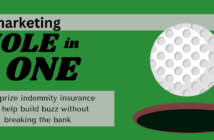Business interruption claims: top-down or bottom-up?
In the event of loss due to a major catastrophe such as a fire, hurricane, or other natural disasters, the method used for calculating business income loss claims can significantly impact the amount of recovery. Evaluating business income loss claims involves estimating the claimants’ business results as they likely would have realized had the loss not occurred.
Business interruption (BI) claims can take one of two forms:
The gross-receipts method is also known as the top-down method.
The net-income method is referred to as the bottom-up method.
Here, we’ll discuss these two methods, including the pros and cons related to each and which is the best for a situation.
 The TOP-DOWN Method
The TOP-DOWN Method
The top-down method is based on the difference between lost sales and the expenses saved because of those sales not happening. Money not spent on operations due to business interruption is factored into gross sales at the top of a typical income statement. This method utilizes a simple calculation that all involved parties easily understand. Based on revenues, the calculation starts at the top of the profit-and-loss statement minus non-continuing (or saved) expenses. For example, saved expenses could include rent, utilities, repairs, maintenance, and any other costs that stop or slow down because of an event.
Pros
• Simple, easy-to-understand calculations
• Faster claims settlementCons
• This method ignores historical net losses the claimant may have experienced prior to the catastrophic event
• Figures can be manipulated
Forensic accountants working on behalf of the insurance company use the top-down method when calculating BI claims. Because no business operates on a constant flow of business, the linear approach of this method can be inadequate when the period of loss is extended and claims become more complicated.
 The BOTTOM-UP Method
The BOTTOM-UP Method
The bottom-up method focuses on the claimant’s projected net income during the loss period and adds in continuing expenses. The calculation is conceptually more complex but may be more accurate when considering an extended period of downtime. This approach generally treats losses like part of a whole and not as though they occurred in a vacuum. Durations, costs, and resource requirements aren’t estimates but actual incurred expenses.
Pros
• Estimations may be more accurate
• Numbers cannot be manipulatedCons
• Complicated calculations
• Time-consuming
A BI claim is not an end-all but rather a financial Band-Aid meant to assist a hotelier in surviving the period of restoration until fully operational. A public adjuster always works to expedite the recovery regardless of the method used to calculate BI. The BI claim is still being worked on in many instances after the insured is back in business.
HANDLING A BUSINESS-INTERRUPTION CLAIM
BI loss isn’t just an accounting function. A narrative must be created to explain the loss and convince the carrier of the calculation. When a hotel is down, it could be losing market share because potential guests must use the competition, and there is the risk of losing longtime customers to your competitors. For this reason, it’s crucial to expedite the remaining portions of the claim to return the insured to operating capacity as quickly as possible.
While both estimation methods are acceptable, the top-down method is easier but may be more suitable for smaller claims with limited periods of business interruption. The bottom-up approach provides a more accurate estimate of the dollar figure needed to get back to business in the case of massive loss and indeterminable downtime. To obtain the optimal settlement, calculations for the damaged hotel must figure in the normal occupancy, actual occupancy, and continuing expenses.





